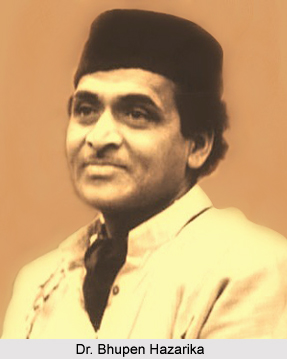 Sonitpur is an administrative district in the state of Assam in India. The district headquarters are located at Tezpur. The district was formed on 1983 after being split from Darrang. Sonitpur district occupies an area of 5,324 square kilometers.
Sonitpur is an administrative district in the state of Assam in India. The district headquarters are located at Tezpur. The district was formed on 1983 after being split from Darrang. Sonitpur district occupies an area of 5,324 square kilometers.
History of Sonitpur District
The name Tezpur is derived from the Sanskrit words `Teza` (meaning blood) and `Pura` (meaning town or city). Legend has it that the original name of this place was `Sonitpur` but when the battle between Lord Krishna`s army and Banasura`s army fought for the rescue of Aniruddha (who was the grandson of Lord Krishna, according to legend) there was so much bloodshed that the whole place was stained in red. This led to the name of the place becoming Tezpur. It is the fifth largest city of Assam after Guwahati, Jorhat, Dibrugarh and Silchar.
Demography of Sonitpur District
According to the 2011 census Sonitpur district has a population of 1,925,975. The district has a population density of 365 inhabitants per square kilometer. Its population growth rate over the decade 2001-2011 was 15.67 %. Sonitpur has a sex ratio of 946 females for every 1000 males and a literacy rate of 69.96 %.
Culture of Sonitpur District
Tezpur is regarded as the cultural capital of Assamese culture. The town has the reputation of producing many stalwarts such as Dr. Bhupen Hazarika, Jyoti Prasad Agarwala (1903-51), Kalaguru Bishnu Prasad Rabha (1909-69), Phani Sarma (1909-70) and Ananda Chandra Agarwala (1874-1939). It is also the birth place of the former Speaker of the Indian Parliament (2004-2009), Somnath Chatterjee.
Tourism in Sonitpur District
There are few places to visit in Sonitpur District. In 1998 Sonitpur district became home to Nameri National Park. The park is located in the foothills of Eastern Himalaya. The park is the second Tiger reserve of Assam. The Nameri National Park has quite rich natural vegetation with numerous species of medicinal and commercial plant species. The district is also home to Orang National Park, which it shares with Darrang District. Orang National Park of Assam was established in 1985. The park also includes Great Indian One-Horned Rhinoceros, pigmy hog, elephants, wild buffalo and tigers. The park is very much known for its rhinoceros population. The park also provides shelter to range of migratory birds, water birds, predators, scavengers and game birds.



















